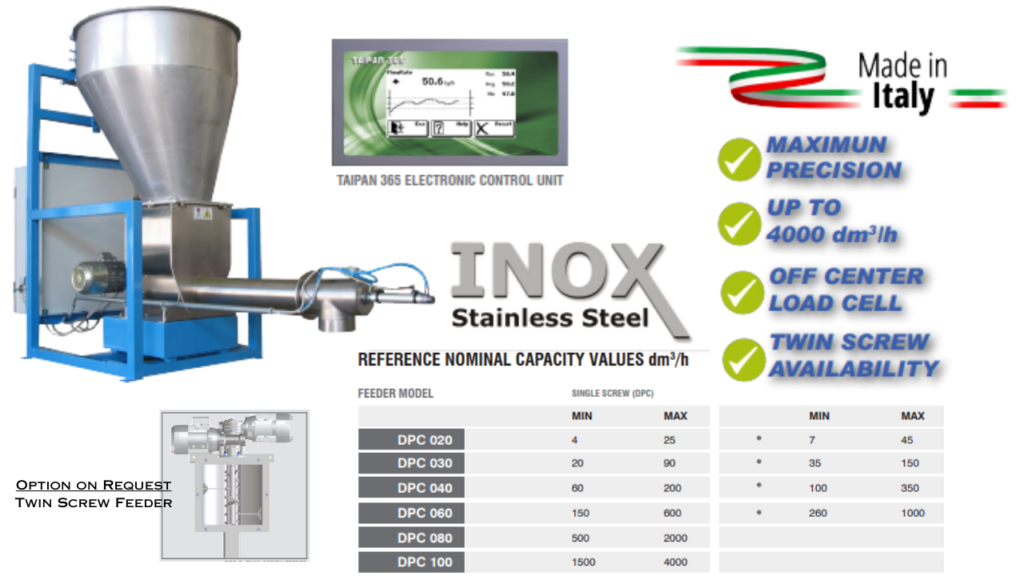A Loss-in-Weight feeder is a specialized type of weighing system used in industries to accurately dispense and control the flow of materials by continuously monitoring and adjusting the feed rate based on weight loss. This type of system is particularly useful when dealing with ingredients that need to be precisely dosed or blended in manufacturing processes.
Here’s how the Loss-in-Weight feeder system works and its importance in industries:

Working Principle: The Loss-in-Weight feeder system operates on the principle of measuring the weight loss of a container or hopper as material is being discharged.
The basic components of a Loss-in-Weight feeder system include:
- Hopper or Container: The material to be dispensed is stored in a hopper or container. The hopper is mounted on load cells that measure its weight.
- Screw Feeder or Conveyor: A feeding mechanism, such as a screw feeder or conveyor, is used to discharge material from the hopper. The feeding rate is controlled by adjusting the speed of the feeder.
- Load Cells: Load cells are placed underneath the hopper to continuously measure its weight. As material is discharged, the weight of the hopper decreases, and the load cells send this information to the controller.
- Controller: The controller receives weight data from the load cells and calculates the rate of weight loss over time. It then adjusts the speed of the feeder to maintain a consistent feed rate and achieve the desired setpoint.
- Material Flow Control: The controller may also be integrated with other sensors or devices to monitor and control the feeding process, ensuring accurate material flow.

Importance in Industries: Loss-in-Weight feeder weighing systems offer several advantages to industries:
- Precise Dosing: LIW feeders are capable of accurately dosing small to large quantities of material, making them ideal for processes where precise ingredient proportions are critical.
- Consistency and Quality: By maintaining a constant feed rate based on weight loss, LIW feeders ensure consistent product quality, preventing overfeeding or underfeeding that can lead to variations in the final product.
- Process Efficiency: LIW systems optimize material usage by adjusting the feed rate in real-time, reducing waste and improving process efficiency.
- Flexibility: These systems are adaptable to different materials and flow rates, making them suitable for a wide range of applications, from food and pharmaceuticals to plastics and chemicals.
- Blending and Mixing: In processes that require blending or mixing of multiple ingredients, multiple LIW feeders can be used in conjunction to achieve accurate and homogeneous mixtures.
- Reduced Labor Requirements: LIW systems can operate automatically once set up, reducing the need for manual intervention and improving operator efficiency.
- Data Collection and Analysis: LIW systems often come with data logging and reporting
capabilities, allowing industries to monitor material usage, process trends, and compliance with regulatory standards.
Loss-in-Weight feeder weighing systems are an essential tool for industries that demand precise and consistent material dispensing. They contribute to improved product quality, reduced waste, and enhanced overall process efficiency, making them a valuable asset in various manufacturing and production environments.

